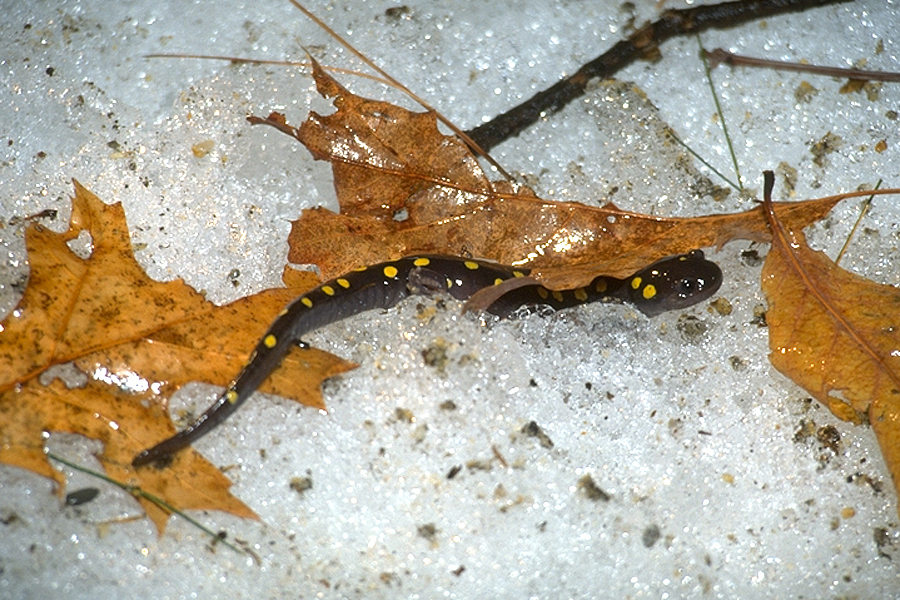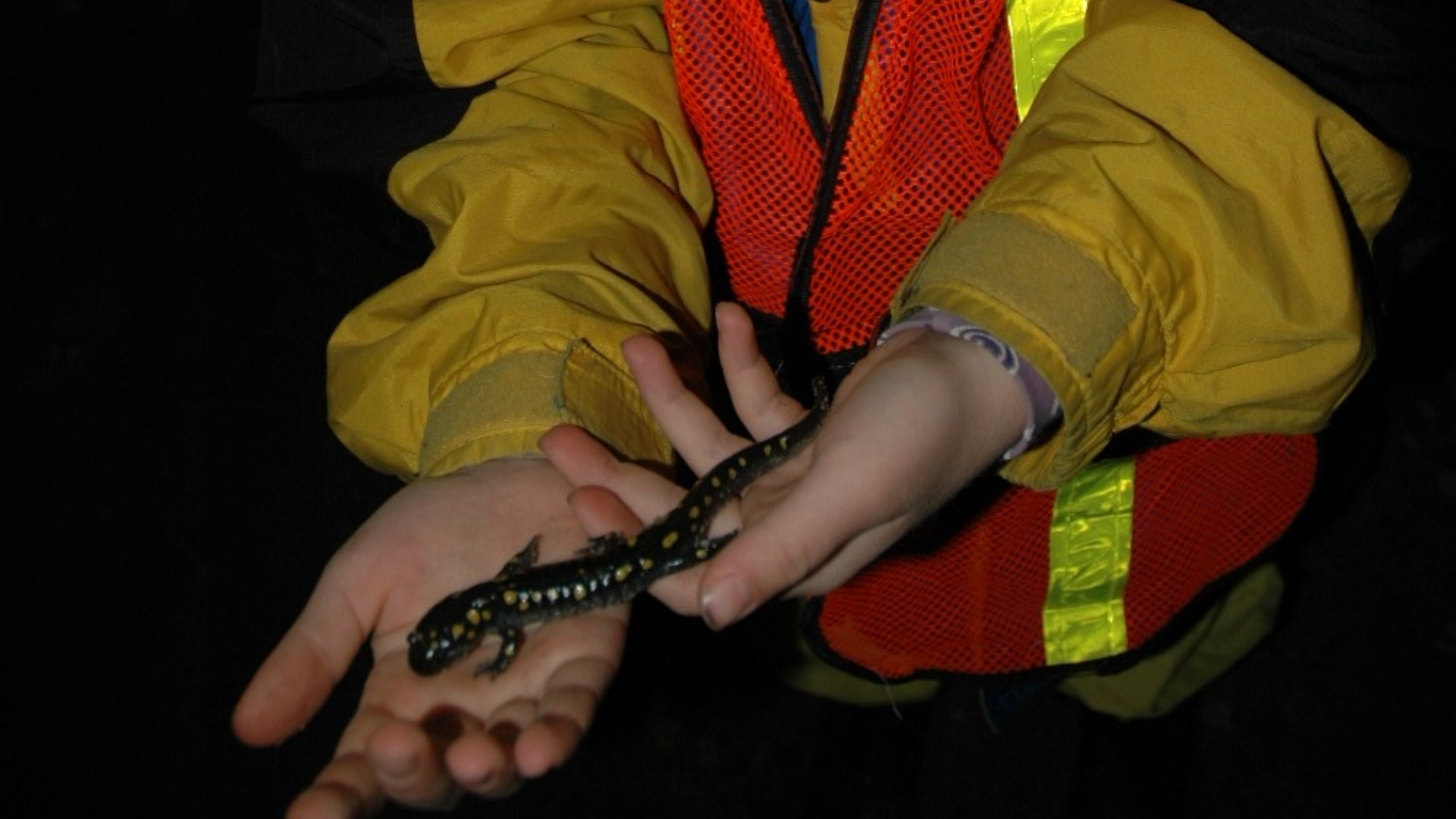Q: What is a “Big Night” for Salamanders?
Through the long Northeast winter salamanders and other amphibians hibernate on the forest floor beneath a blanket of leaves, some species freezing solid to survive the cold. But even in hibernation their bodies are attuned to the weather, and they wait patiently for a telltale sign of spring: the first 45 degree night with steady rainfall.
That particular weather might send most of us indoors, preferably under a blanket with a cup of tea in hand. But for salamanders, frogs, and other herpetofauna—the general term for amphibians and reptiles— the drizzle signals the end of a long winter and begins a frenzy of spring breeding activity.

On this so-called “Big Night,” salamanders, frogs, and toads awaken from their slumber and climb out of their burrows. They migrate en masse, sometimes up to a quarter mile, to their vernal pools and commence a flurry of breeding activity.
In reality, over the course of a breeding season there will typically be several Big Nights, in addition to “one or two Medium Nights, and sometimes a smattering of Small Nights,” as explained by Brett Amy Thelen. Temperature and precipitation are the two most important factors in predicting herp migration, and there are typically several nights throughout March and April with the right weather conditions for movement.
Many salamanders, frogs, and toads display something scientists call “site fidelity,” meaning they return to the same breeding grounds year after year. There, a variety of species will undergo particular breeding processes, dramas in miniature taking place beneath the water’s surface. For spotted salamanders, eggs laid in a vernal pool will incubate for 4-7 weeks before hatching into larvae, which are just over a centimeter in length. Two to four months later, the larvae transform into juveniles and leave the vernal pool for higher, drier ground.
Unfortunately, the great spring migration poses a significant risk to populations of salamanders, frogs, and toads. Many migratory paths cross roadways, and drivers passing through on Big Nights may unknowingly kill hundreds of individuals. A research team in western Massachusetts discovered that mortality rates on rural roads, if sustained, could result in localized extinction of spotted salamanders in only 25 years.
The plight of the salamanders has captured the imagination of the public, and volunteer-run Salamander Crossing Brigades throughout the Northeast have grown in size year over year. In her popular book Braiding Sweetgrass, Robin Wall Kimmerer suggests that “carrying salamanders to safety… helps us to remember the covenant of reciprocity, the mutual responsibility that we have for each other.”

On Big Nights (or Medium Nights) in March and April, salamander crossing guards venture out into the dark, drizzly evening with flashlights, reflective vests, and identification toolkits. They station themselves at peak crossing sites and aid the salamanders, frogs, and toads to safety, collecting species counts and other data the whole time.
Robust and well-coordinated citizen data collection has resulted in extensive knowledge about herpetofauna migratory paths in Vermont and beyond, allowing for identification of priority sites for voluntary crossing brigades.
But while many members of the public have taken up the noble role of crossing guard or modified their driving routes during rainy spring nights, the problem of road-related mortality persists, and even large numbers of volunteers can’t save every salamander from being flattened.
To address this problem, the town of Monkton, Vermont, in partnership with Lewis Creek Association, VTrans, Vermont Reptile and Amphibian Atlas, and others developed the Monkton Wildlife Crossing Project. The rare Blue-spotted Salamander served as the poster child for this wildlife crossing, but the now-complete amphibian crossing tunnels—which run under heavily-trafficked roads crossing key spring migratory paths—serve many other kinds of wildlife. The project received international attention for its innovative approach to ongoing ecological restoration.
Want to learn more about protecting and advocating for migrating amphibians and reptiles? Check out our resource page!
Sources: Adirondack Almanack, Braiding Sweetgrass: Indigenous Wisdom, Scientific Knowledge, and the Teachings of Plants, Wetlands Ecology & Management